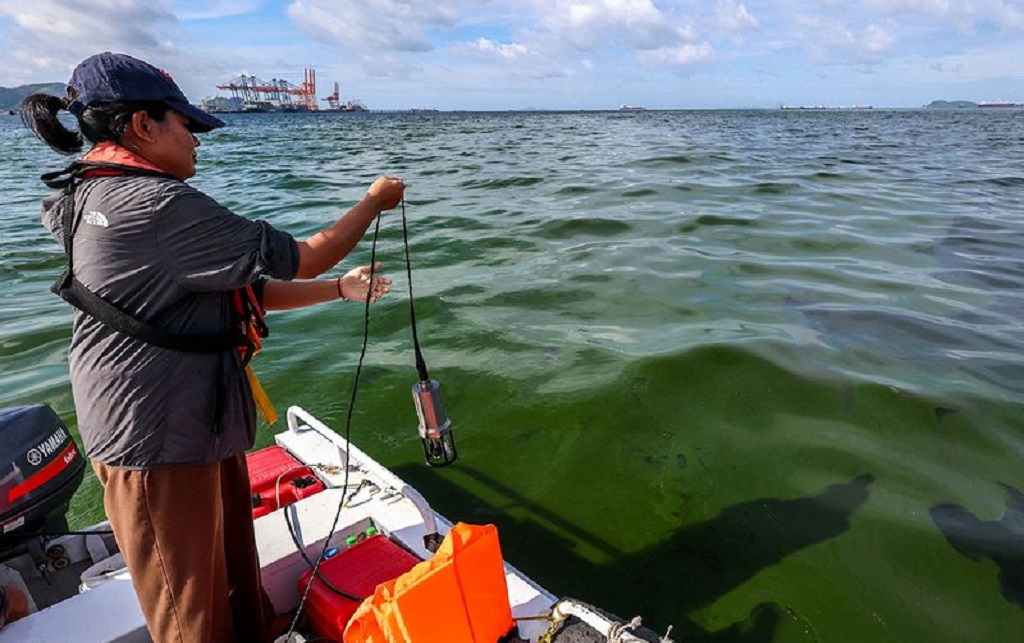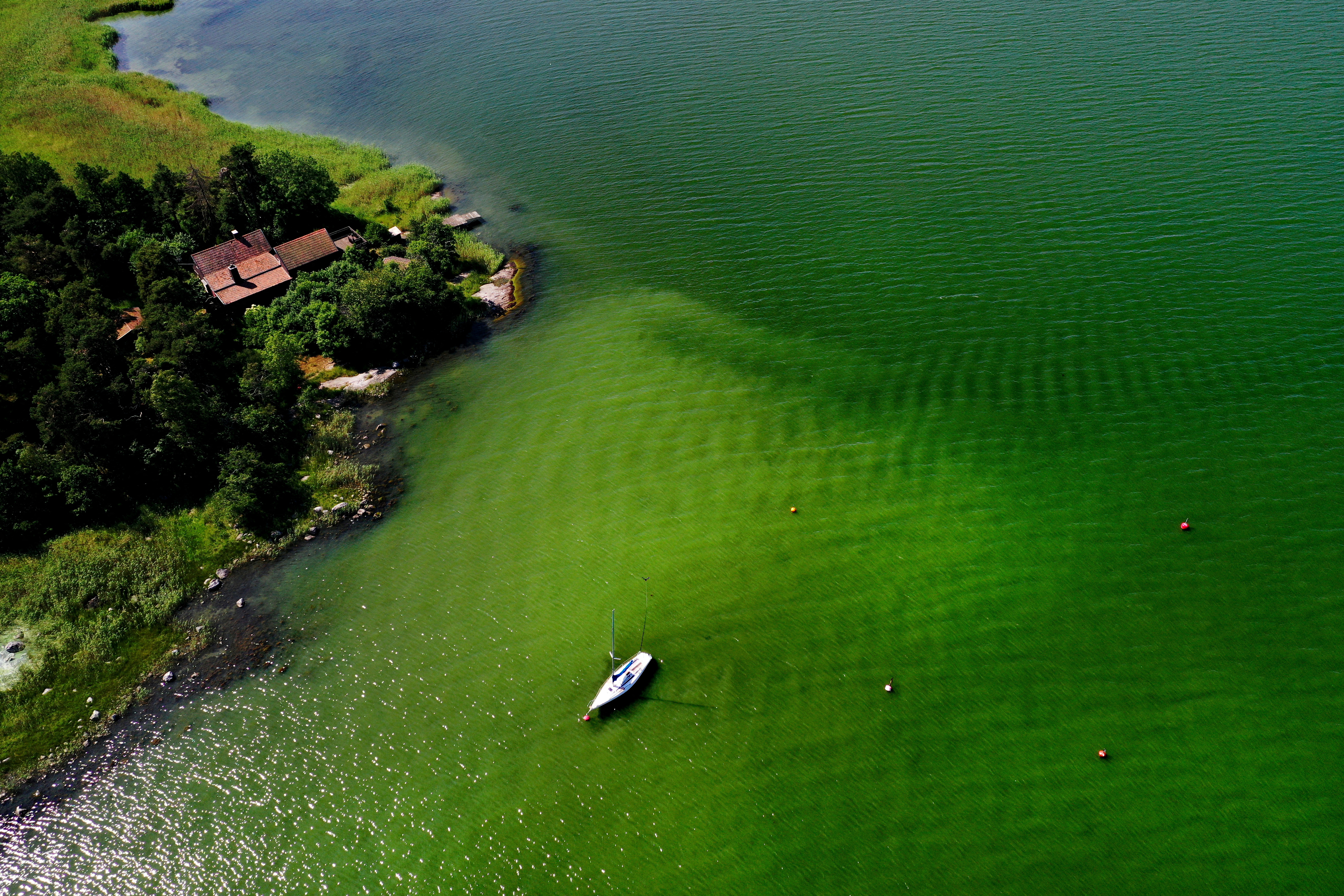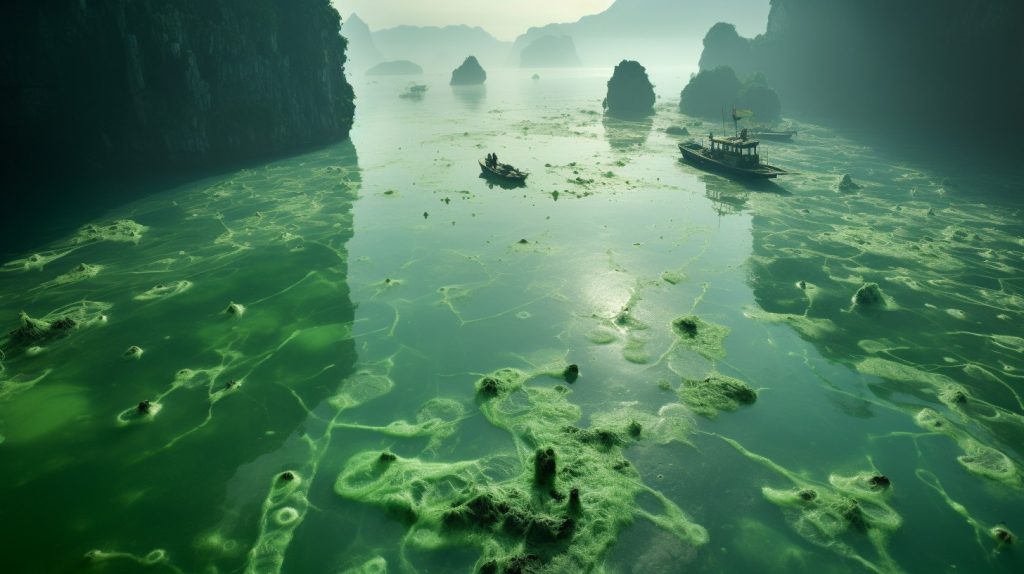News
Plankton Bloom Creates Aquatic “Dead Done” in Eastern Thailand
A dense plankton bloom off Thailand’s eastern coast is creating an aquatic “dead zone,” endangering the livelihoods of local fisherman who harvest mussels in the waters.
According to marine biologists, certain sections of the Gulf of Thailand have more than ten times the typical amount of plankton, which turns the water a vivid green and kills marine life.
“This is the first time I’ve seen it this bad,” said Tanuspong Pokavanich, a marine expert. “It is very severe.”
Plankton blooms occur once or twice a year and normally last two to three days, according to scientists. They can release chemicals into the environment or destroy marine life by depleting oxygen in the water and obstructing sunlight.
Chonburi’s shores are famous for its mussel farms, and the flood has affected more than 80% of the almost 300 plots in the area, according to Satitchat Thimkrajong, head of the Chonburi Fisheries Association.
One of the affected plots was that of fisherman Suchat Buwat. He said that the bloom had cost him more than 500,000 baht ($14,000), with his rivals also suffering “unfathomable” losses.
While the origin of the massive plankton bloom is unknown, scientists assume it is due to pollution and the extreme heat induced by climate change.
“El Nio causes drought and higher sea temperatures,” Tanuspong explained. “If we don’t change how we manage resources, waste water, and live, everything will get worse.”
Earlier this year, a plankton bloom washed up on a stretch of beach in Thailand‘s southern Chumphon province, prompting experts to blame climate change for the natural occurrence.
Marine heatwaves have been an increasing issue around the world this year, with thousands of dead fish washing up on Texas beaches and experts warning of algae blooms around the British coast as a result of rising water temperatures.
About Plankton Blooms
Plankton blooms are large increases in the population of planktonic creatures, which are microscopic aquatic animals that drift with the currents in oceans, seas, and other bodies of water. Plant-like (phytoplankton) and animal-like (zooplankton) species are both included in plankton.
Plankton blooms can be huge, with a variety of ecological and environmental consequences. Here are some important facts about plankton blooms:
Plankton blooms are often created by an abundance of nutrients in the water, mainly nitrogen and phosphorus. These nutrients can come from a variety of sources, including agricultural runoff, sewage discharge, and nutrient-rich deep water upwelling.
Plankton Bloom Types:
Phytoplankton blooms are characterised by a fast increase in the population of tiny algae (phytoplankton). The primary producers in aquatic ecosystems and the foundation of the marine food chain are phytoplankton.
Zooplankton blooms:
These are less common but nonetheless significant increases in the number of small aquatic animals that feed on phytoplankton and other organic debris.
Eutrophication:
Excessive plankton blooms can cause eutrophication, a process in which water bodies become overly nutrient-rich. This can lead to decreased oxygen levels, harmful algal blooms (HABs), and the demise of other aquatic creatures.
Toxic Algal Blooms (HABs):
Toxins produced by some phytoplankton species in blooms can be toxic to marine life and people. These toxic blooms can kill fish and endanger human health if consumed with tainted seafood.
Plankton blooms have the potential to disturb marine ecosystems by altering food web dynamics. They can provide a temporary excess of food for higher trophic levels, such as fish and marine animals, but they can also lead to resource scarcity after the bloom fades.
Monitoring and Research:
To better understand the origins and effects of plankton blooms, scientists and environmental organisations employ satellites, buoys, and water samples. This information aids in the prediction and management of the effects of blooms on ecosystems and human activities such as fishing.
Climate Change:
Climate change can influence plankton blooms by changing ocean temperature and circulation patterns, which affect nutrient availability and plankton species dispersion. These alterations have the potential to have a domino impact on marine ecosystems.
Mitigation:
To lessen the harmful effects of plankton blooms, efforts are being made to minimise nutrient inputs into aquatic bodies, such as through better agricultural practises and improved sewage treatment. Early warning systems for HABs are also being developed to protect human health and fisheries.
Plankton blooms are natural events in general, but their frequency and severity can be affected by human activity. Understanding and regulating these occurrences is critical for keeping marine ecosystems healthy and sustainable.
































